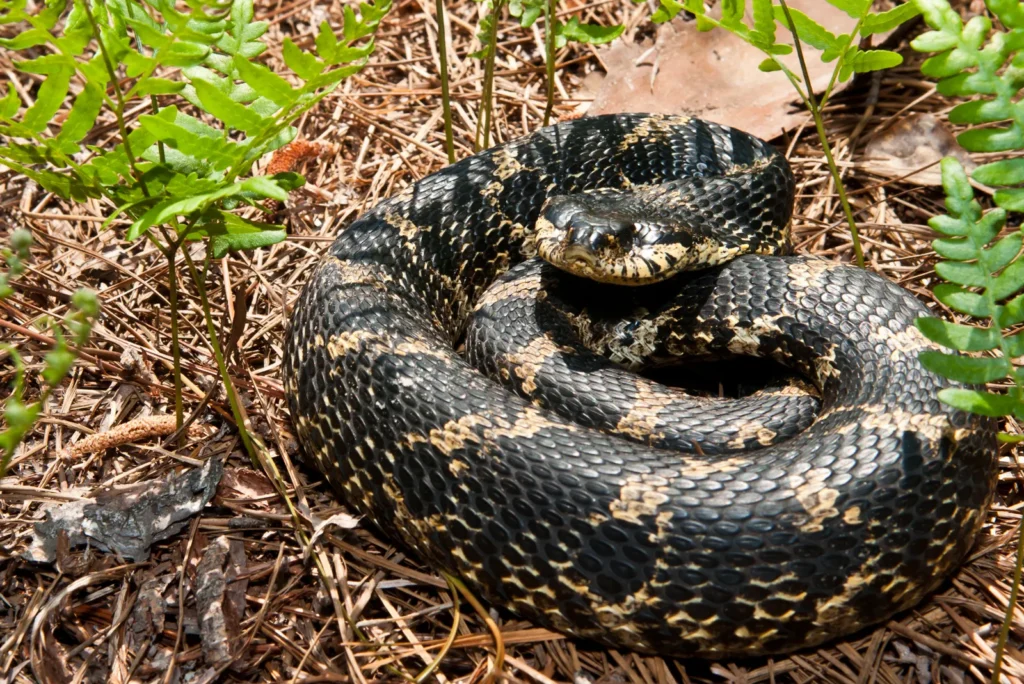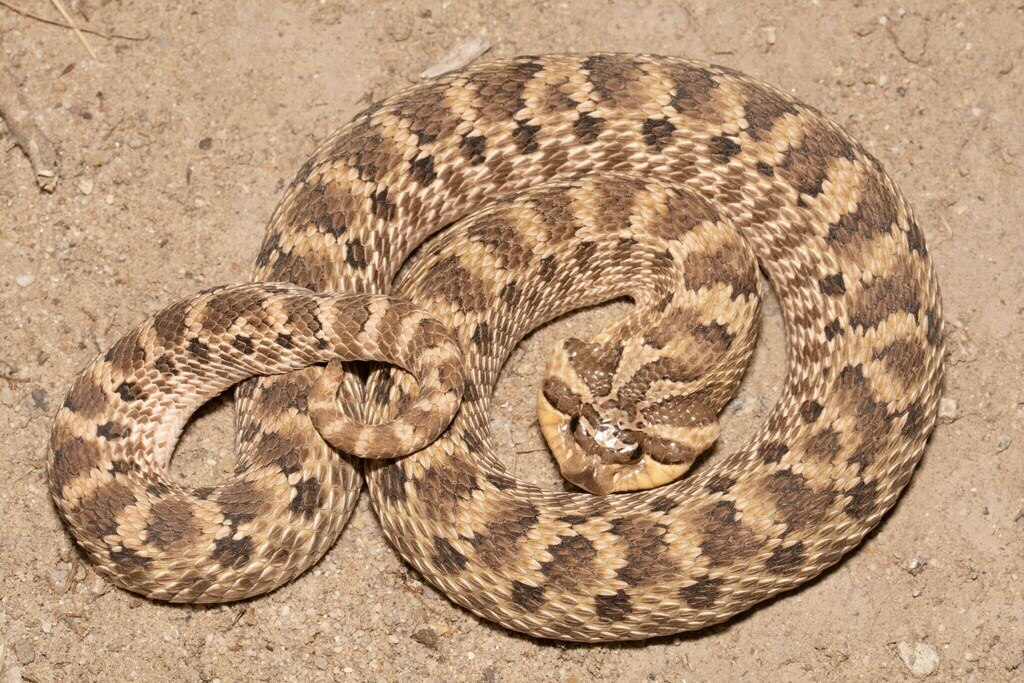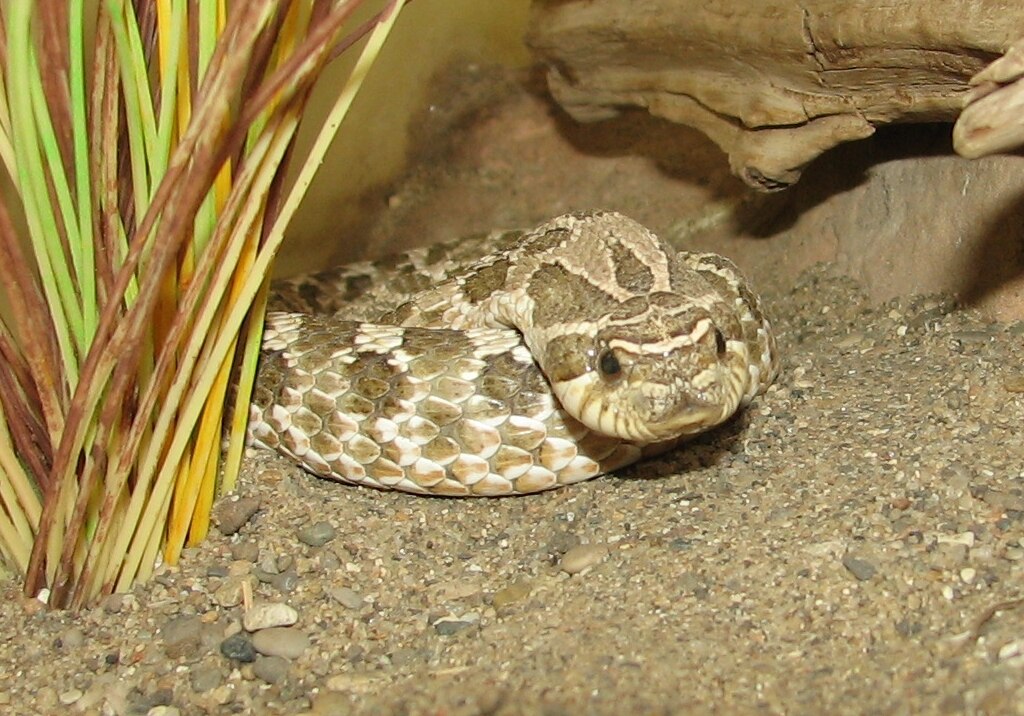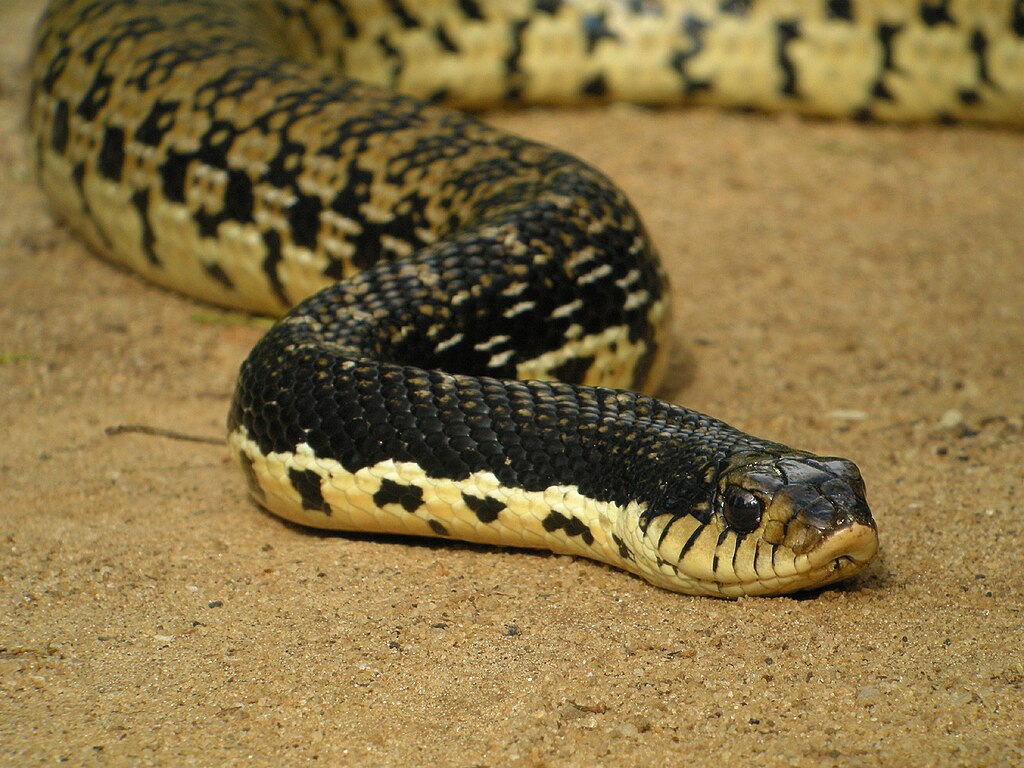In the diverse world of serpents, where venom is often the primary weapon for hunting and self-defense, one remarkable species stands out for its reluctance to deploy its toxic arsenal. The rear-fanged hognose snake possesses venom but displays an extraordinary preference for alternative defense mechanisms before resorting to its venomous bite. This fascinating reptile challenges our understanding of snake behavior and venom evolution, demonstrating that not all venomous snakes are quick to strike. Its complex defense repertoire and selective use of venom make it a subject of intrigue for herpetologists and nature enthusiasts alike, offering valuable insights into the nuanced world of snake behavior and the evolutionary development of venom as a specialized adaptation.
The Distinctive Hognose Snake: An Overview

Hognose snakes belong to the Colubridae family, with three main genera found in North America: Heterodon, Leioheterodon, and Lystrophis. Their most distinctive physical characteristic is the upturned, pig-like snout that gives them their common name, which they use for digging in loose soil while hunting for prey. These medium-sized snakes typically reach lengths between 20-33 inches as adults, displaying a variety of color patterns from solid browns and blacks to more complex patterns with spots or blotches. Despite possessing rear fangs and venom glands, hognose snakes are considered mildly venomous at most and primarily use their venom to subdue amphibian prey rather than for defense against predators. Their unique physiology and behavior have made them both popular in the pet trade and subjects of scientific interest in the study of venom evolution.
Understanding Venom as a Last Resort Strategy

For the hognose snake, venom represents a specialized adaptation primarily evolved for prey acquisition rather than defense, making it fundamentally different from the defensive venom used by vipers or cobras. This specialized toxic mixture is produced in modified salivary glands and delivered through rear-positioned fangs that require significant jaw manipulation to effectively envenomate a target—a physiological arrangement that makes defensive biting both difficult and inefficient. From an evolutionary perspective, venom is metabolically expensive to produce, requiring significant energy resources that make conservative use advantageous for the snake’s overall survival. The hognose’s reluctance to bite defensively represents an adaptive strategy that preserves its valuable venom resources for essential feeding purposes while relying on its elaborate repertoire of alternative defense mechanisms to avoid predation. This strategic approach to venom usage demonstrates a sophisticated balance between offensive hunting requirements and defensive survival tactics.
The Primary Defense: Impressive Bluffing Displays

When threatened, the hognose snake initiates an elaborate choreography of intimidation that begins with flattening its neck and head to mimic the hooded appearance of a cobra, creating the illusion of a larger and more dangerous serpent. Accompanying this visual display, the snake will forcefully exhale air, producing a convincing hissing sound that further enhances its threatening presence to potential predators. If the threat persists, the hognose escalates its performance by lunging repeatedly at the perceived danger with closed mouth strikes—bluff attacks designed to frighten rather than harm. These theatrical displays are remarkably effective at deterring many predators without requiring the snake to expend valuable venom or risk injury through actual combat. Herpetologists consider the hognose’s bluffing routine among the most elaborate in the snake world, demonstrating how natural selection has favored non-venomous defensive adaptations in this species.
Playing Dead: The Ultimate Deception

When intimidation tactics fail, the hognose snake employs one of the most dramatic defense mechanisms in the reptile world—thanatosis, or death-feigning. This remarkable behavior begins with the snake rolling onto its back and convulsing dramatically before becoming completely limp with its mouth open and tongue hanging out, creating a convincing portrayal of death. To enhance this deception, the snake may release a foul-smelling musk from its cloaca and even produce blood from its mouth in some cases, adding olfactory and visual components that make the performance even more convincing to predators. What makes this behavior particularly fascinating is the snake’s commitment to the act—if turned right-side up, a hognose will immediately flip back onto its back, maintaining the death pose until it perceives the threat has passed. This elaborate performance takes advantage of the fact that many predators avoid dead prey, preferring fresh kills, thus allowing the hognose to escape predation through behavioral adaptation rather than venomous defense.
Venom Composition and Its Limited Potency

The venom of hognose snakes is classified as a toxic saliva rather than a highly specialized venom, containing a mixture of enzymes and compounds significantly less potent than that of medically significant venomous snakes. Its primary components include mild cytotoxins and enzymes that help immobilize and begin breaking down amphibian prey, particularly adapted to affect toads and frogs which constitute their preferred diet. Laboratory analysis has revealed that hognose venom lacks the powerful neurotoxins, hemotoxins, or cardiotoxins found in vipers or elapids, making it relatively harmless to humans and larger mammals. This limited potency further explains why the snake relies on it primarily for feeding rather than defense, as the venom would provide little protection against most mammalian predators. Research continues into the exact composition of hognose venom, with some studies suggesting it may contain mild anticoagulants and tissue-dissolving compounds that help the snake digest its specialized prey more effectively.
Rear-Fanged Delivery System: A Mechanical Disadvantage

Unlike front-fanged venomous snakes such as rattlesnakes or cobras, the hognose possesses opisthoglyphous dentition—a rear-fanged arrangement where the enlarged, grooved venom-delivering teeth are positioned at the back of the upper jaw. This anatomical configuration requires the snake to chew or work its prey deeper into its mouth to effectively deliver venom, making quick defensive strikes largely ineffective for venom injection. The venom delivery apparatus includes relatively small Duvernoy’s glands (modified salivary glands) that produce limited quantities of venom compared to the specialized venom glands of vipers or elapids. When feeding, the hognose must maintain a grip on its prey and use chewing motions to work the rear fangs into position, a process that can take several seconds—a timeframe impractical for defensive purposes against mobile predators. This mechanical disadvantage for defensive biting represents another reason why the hognose has evolved its elaborate series of alternative defense mechanisms, reserving its limited venom capabilities primarily for subduing prey.
Dietary Specialization: Why Venom Matters for Feeding

Hognose snakes have evolved as specialized predators of toads and frogs, prey animals that present unique challenges due to their defensive toxins and inflatable bodies. The snake’s mild venom plays a crucial role in overcoming these defenses, containing compounds that help neutralize the toxins produced by many toad species while simultaneously beginning the digestive process. Their upturned snout serves as an effective tool for locating and excavating toads that bury themselves in loose soil, demonstrating how their physical adaptations complement their venomous specialization. This dietary focus explains why conserving venom for feeding rather than defense makes evolutionary sense—without it, the snake would struggle to process its primary food source efficiently. Research has shown that some hognose species can safely consume toads that would be lethal to other predators, highlighting the specialized nature of their venom and digestive system as adaptations specific to their ecological niche.
Human Encounters: Understanding the Risk Level

Despite possessing venom, hognose snakes pose minimal risk to humans due to their reluctance to bite, their rear-fanged delivery system, and the mild nature of their venom. In the rare instances when defensive bites do occur, symptoms typically include minor localized pain, redness, and swelling—more akin to a bee sting than a venomous snake bite—and serious medical complications are exceptionally rare. Allergic reactions remain the primary concern, as with any animal venom, though documented cases of significant allergic responses to hognose bites are extremely uncommon. Herpetologists and wildlife professionals who regularly handle these snakes generally consider them safe, though they recommend standard precautions such as washing bite sites thoroughly and monitoring for unusual reactions. The medical literature contains virtually no reports of life-threatening envenomations from hognose snakes, further supporting their classification as non-dangerous to humans despite their technical status as venomous reptiles.
Species Variations in Defensive Behavior

Among the various hognose species, significant differences exist in their propensity to employ different defensive tactics, with some relying more heavily on bluffing while others more quickly resort to death-feigning. The Eastern Hognose (Heterodon platirhinos) typically exhibits the most dramatic defensive displays, often performing extensive bluffing routines before playing dead when threatened. In contrast, the Western Hognose (Heterodon nasicus) tends to be quicker to roll over and play dead, sometimes skipping the elaborate bluffing stage entirely when faced with persistent threats. The Southern Hognose (Heterodon simus), the smallest of the North American species, often relies more on camouflage and fleeing than on elaborate displays, demonstrating how even closely related species can develop different priorities in their defensive repertoires. Researchers have noted that individual temperament also plays a significant role, with some snakes consistently showing greater or lesser propensity toward certain defensive behaviors regardless of species—suggesting that defensive behavior in hognose snakes involves both genetic programming and individual behavioral plasticity.
Conservation Status and Threats

Several hognose snake species face significant conservation challenges, with the Southern Hognose (Heterodon simus) listed as threatened or endangered in parts of its range due to habitat loss and fragmentation. Their specialized diet makes them particularly vulnerable to declines in amphibian populations, which have been documented worldwide due to pollution, climate change, and disease. Road mortality represents another significant threat, as these snakes are frequently killed by vehicles while crossing roads, particularly during seasonal migrations or mating periods. The misconception that these harmless snakes are dangerous continues to result in deliberate killings by uninformed people, despite educational efforts by wildlife agencies and conservation organizations. Conservation strategies for hognose snakes focus on habitat protection, public education to dispel myths about their danger to humans, and in some cases, captive breeding programs to support populations of the most threatened species.
Evolutionary Perspective: The Development of Reluctant Venomousness

The hognose snake represents a fascinating evolutionary middle ground in the development of venom systems, illustrating how venom can evolve primarily as a feeding adaptation rather than a defensive weapon. Phylogenetic studies suggest that the ancestors of today’s hognose snakes likely developed their mild venom and rear-fanged delivery system as adaptations to specialized diets, particularly the consumption of toxic amphibians that would otherwise be dangerous or impossible to eat. This evolutionary trajectory differs significantly from that of vipers and elapids, whose venom systems evolved under strong selection pressure for both effective prey capture and defense against predators. The hognose’s elaborate non-venomous defensive displays likely co-evolved with its specialized feeding apparatus, compensating for the limited defensive utility of its venom system while allowing it to conserve venom for its primary purpose. Evolutionary biologists consider the hognose an excellent example of how natural selection can shape complex trait combinations that balance the metabolic costs of venom production with the benefits of specialized feeding capabilities and alternative defensive strategies.
Hognose Snakes in Captivity: Observing Natural Behaviors

The captive keeping of hognose snakes has provided valuable opportunities for observing their unique defensive behaviors in controlled settings, with many owners reporting that even long-term captive specimens retain their elaborate defensive displays. Proper husbandry practices for these specialized reptiles include providing loose substrate for digging, maintaining appropriate temperature gradients, and offering a diet that reflects their natural preference for amphibians, though many captive specimens can be successfully transitioned to rodent prey. Ethical considerations in keeping these snakes include ensuring they have adequate space to express natural behaviors and avoiding handling during sensitive periods such as after feeding or during shedding. Reptile enthusiasts who keep hognose snakes often become important advocates for their conservation, helping to educate the public about these misunderstood reptiles and their ecological importance. Behavioral studies conducted with captive specimens have contributed significantly to our understanding of their defensive repertoire, feeding preferences, and the environmental triggers that elicit different responses.
The Ecological Role of the Reluctant Venomous Snake

As specialized predators of amphibians, hognose snakes play a crucial role in regulating populations of frogs and toads within their ecosystems, helping to maintain balanced food webs and healthy wetland environments. Their digging behavior, facilitated by their distinctive upturned snouts, contributes to soil aeration and turnover in the habitats they occupy, providing secondary ecological benefits beyond their predatory role. As prey themselves for larger predators such as hawks, owls, and mammalian carnivores, they represent an important link in transferring energy from amphibian populations up the food chain to higher-level predators. The unique defensive strategies of hognose snakes, particularly their reliance on bluffing and death-feigning rather than biting, represent behavioral adaptations that allow them to fulfill their ecological role while minimizing potentially dangerous encounters with larger animals. Conservation biologists emphasize that understanding and protecting these specialized predators is essential for maintaining the integrity and function of the diverse ecosystems they inhabit throughout North and South America.
Conclusion

The hognose snake stands as a remarkable example of evolutionary specialization, demonstrating how venom can evolve primarily as a feeding adaptation with defensive capabilities remaining secondary. Through its elaborate repertoire of alternative defense mechanisms—from dramatic cobra-like displays to convincing death-feigning performances—this specialized predator illustrates nature’s ingenuity in balancing the costs and benefits of venom production. The hognose’s reluctance to bite defensively challenges our common perceptions of venomous snakes while providing valuable insights into the evolution of venom systems and defensive behaviors. As we continue to study these fascinating reptiles, their unique adaptations remind us that in nature, the most interesting solutions often involve complex trade-offs and specialized adaptations tailored to specific ecological niches.





